Scientific Images as Worldviews
Author: Valeria Burgio (Università Ca' Foscari Venezia)Editor: Aaron Gregory (University of California, Riverside)
Report Backs
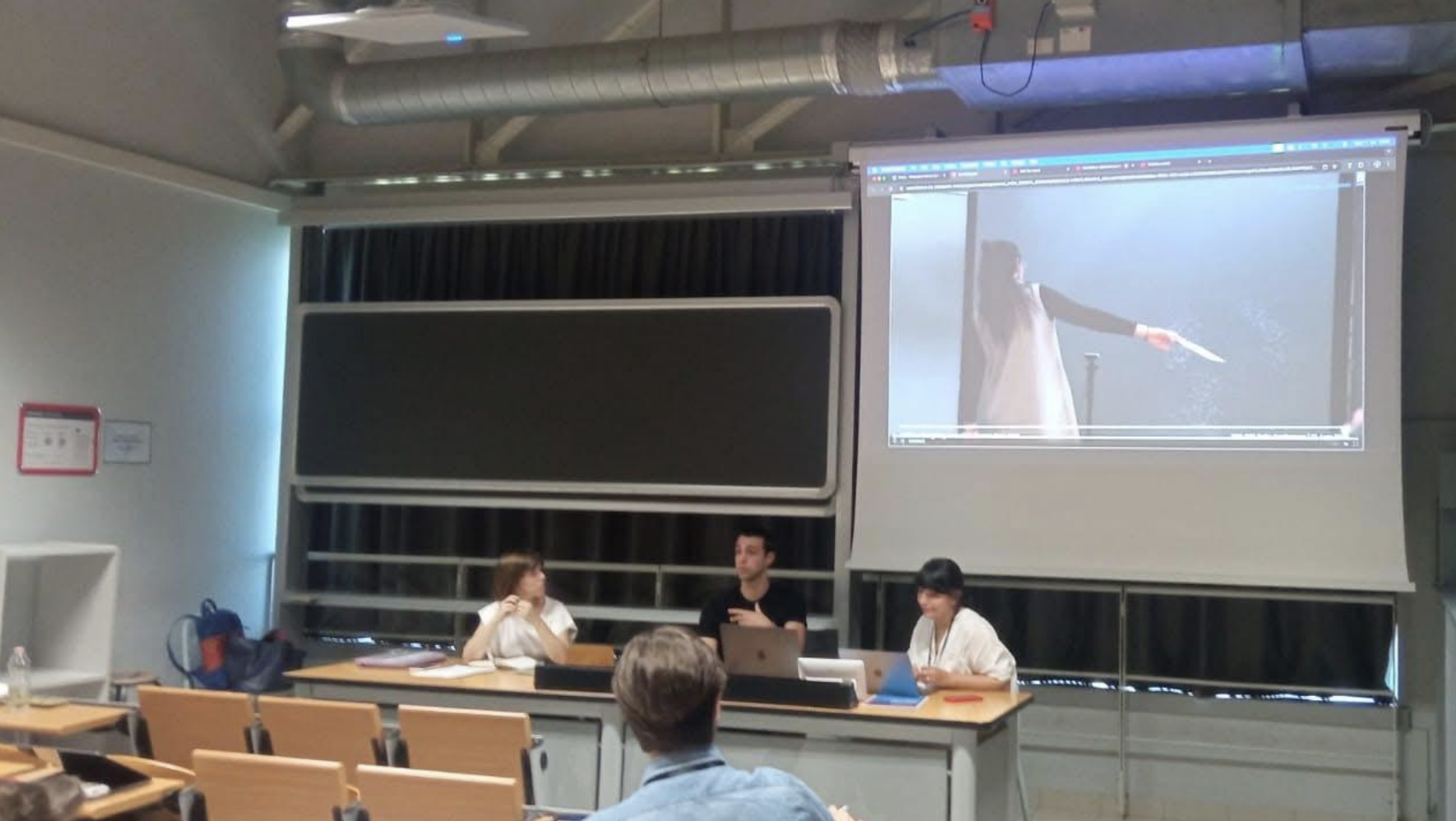
(Rocco Modugno and Secil Ugur presenting “Designing Embodied Human-Data Intra-Actions”)
Scientific Images as Worldviews
A report from the panel “The Good and the Beautiful: Visualizing Science in the (Post-)Digital Age” - 10th STS Italia conference 'Technocience for Good', Milan 11-13 June 2025.
In which ways do images, graphs, diagrams, and other visual forms contribute to the construction of scientific knowledge? Does data visualization convey only scientific information, or does it also express cosmologies and the organization of thought? Does transporting scientific images into exhibition contexts affect visualization processes in laboratories? What role does aesthetics play in raising awareness?
Departing from the assumption that scientific images are not passive representations of "nature," our panel explored visualizations as active elements in the construction of scientific facts and the diffusion of scientific visual culture (Lynch, 1985; Lynch & Woolgar, 1990). The panel also examined visualizations as symptoms of changes in epistemic ideals and worldviews (Daston & Galison 2007). 'The Good and the Beautiful: Visualizing Science in the (Post-)Digital Age” brought together experts in design, semiotics, and sociology of science to reflect on the power of scientific visualizations to shape culture, and the power of culture to shape scientific visualizations.
Visualizing the Brain: A Cultural Practice

(Carnaval neuronal, shown at Beauty Brain. © Giuseppe Gangarossa, Université Paris Cité)
Sébastien Lemerle (Université Paris Nanterre) took us on a fascinating journey through the history of visualization in brain science, from the time when anatomical sketches and maps were first created, to present day electroencephalographs, computed tomography CT scanners, and magnetic resonance imaging (MRI) machines. He showed how different “mediators” (Dumit, 2004) have a role in constructing different “visual imaginaries” of the brain (Rose & Abi-Rached, 2013, Anichini, 2018), sometimes specifying differences between people, and sometimes homogenizing data in order to render universal characteristics of human brains visible using contemporary laboratory equipment such as CT scanners and MRI machines. Discussions also delved into the ability of brain images to take on new meaning when they cross the boundaries of the lab and enter into popularization, as with cases including shows such as Beauty Brain (Université Paris Diderot, 2017) and It Begins with an Idea (Fondazione Prada, Venice, 2022). Brain images can indeed carry a wide range of ideas about the mind, the soul, or the human being, seen as a sum of local and fixed functions, or as plastic organisms open and connected to their environments.
Visualizing the Microbiome as an Interdependent and Diverse Ecosystem

(The Winogradsky columns on display on microbiologist Donato Giovannelli’s office desk. @Donato Giovannelli, Giovannelli Lab, Università Federico II, Naples)
Valeria Burgio (Ca’ Foscari University of Venice) examined an old experimental practice which has made a recent comeback in environmental microbiology laboratories alongside and despite the prevalence of advanced technologies such as metagenomics: the Winogradsky column, a mixed cultivation technique invented in the second half of the XIX century by Ukrainian soil microbiologist Sergei Winogradsky. She considered the comeback of this cultivation and conservation method as a symptom of changing worldviews regarding not only microbes, which are now recognized as relational communities due to new sequencing techniques, but also as relationships between humans and their environment (Grote, 2017). She examined the semiotic relationship between this technological device initially intended as a microcosm, and the world outside, using the design theory concept of “autographic visualization” (Offenhuber, 2024) where meaningful forms - colors and positions in space – are produced by microbes and then recognized and redesigned by humans. Due to their ability to model coexistence and mutuality, Winogradsky columns occasionally enter the realm of scientific popularization and art exhibitions, contributing to a more general ecological sensitivity through the construction of new visual imagery.
Trees, Vectors, and AI Opacity: Designing Knowledge
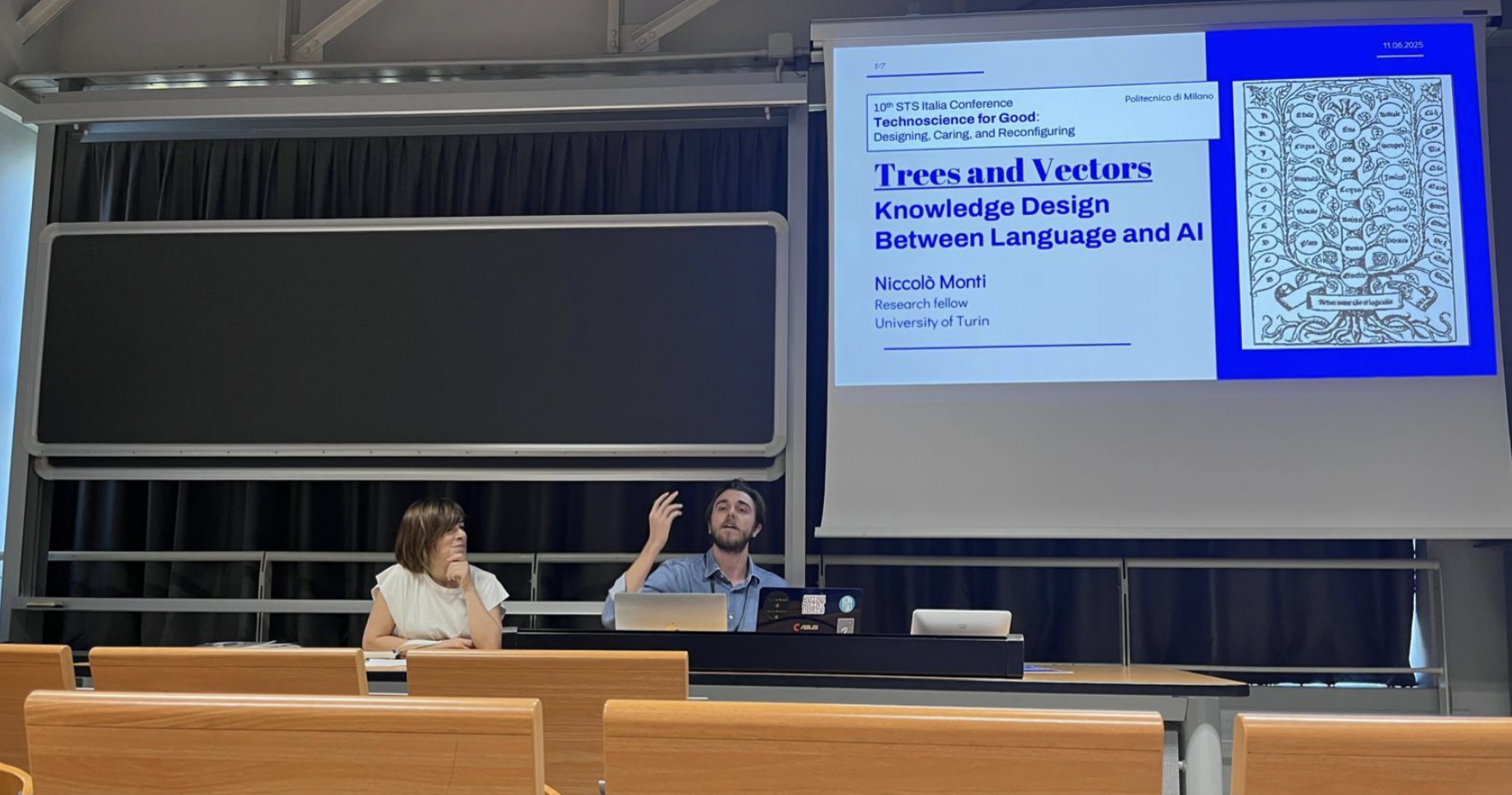
(Niccolò Monti presenting “Trees and Vectors”)
Niccolò Monti (University of Turin) explored how visualization methods serve as epistemic precedents for Artificial Intelligence (AI), He examined several mapping techniques used in data science, such as word embeddings and arborescent models. However, he also highlighted the incommensurability of AI models and traditional visualization, given the difficulties of making multi-dimensional vector spaces easily interpretable. He traced the genealogy of designs of linguistic knowledge, particularly focusing on the development from probabilistic linguistics to natural language processing, and their propensity to offer misleading interpretations of how AI actually works.
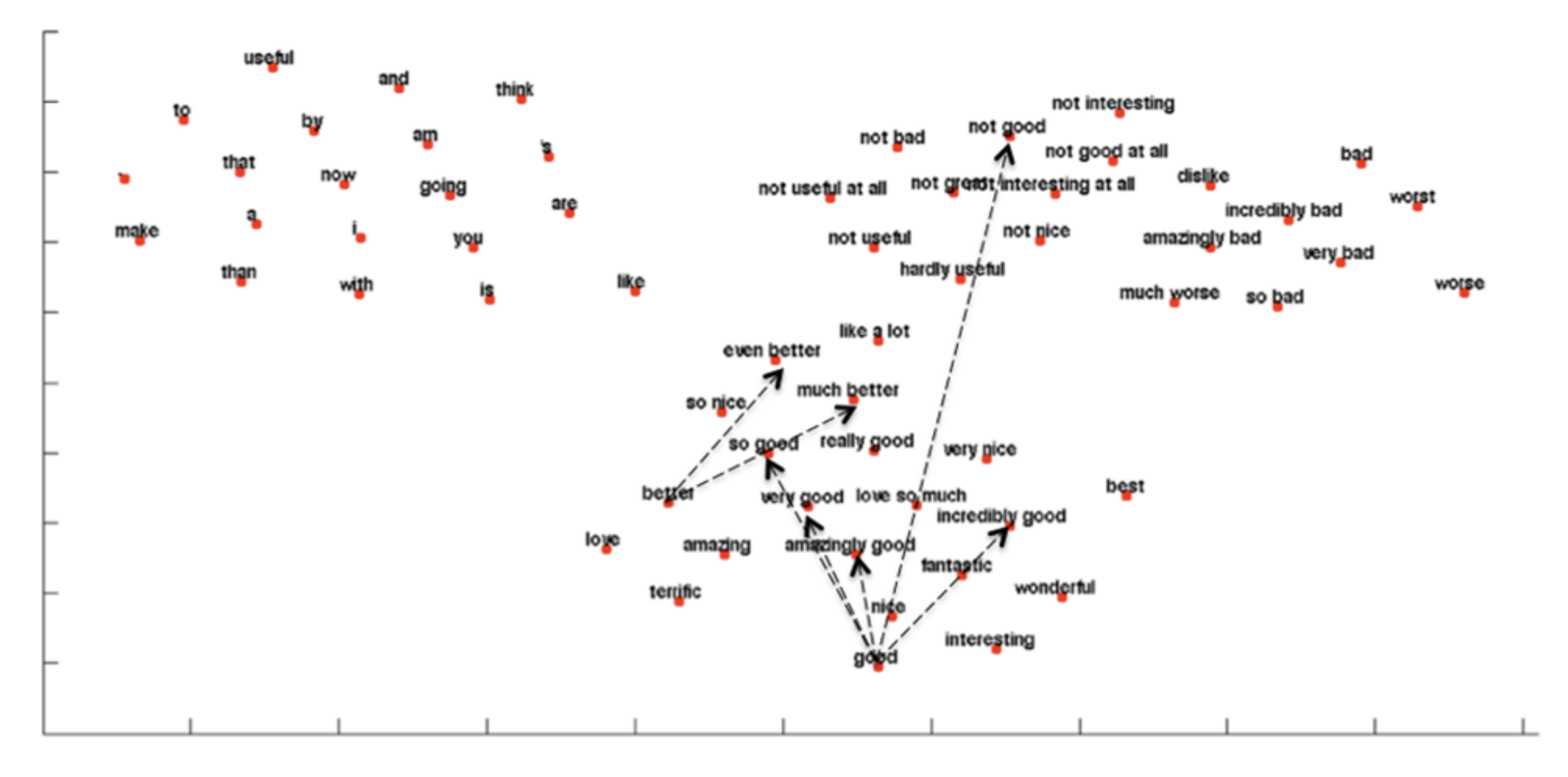
(A t-SNE visualization made from latent representations for modifications and negations of ‘good’ and ‘bad’. Taken from Li, J., Chen, X., Hovy, E. and Jurafsky, D. (2016) “Visualizing and Understanding Neural Models in NLP”, Proceedings of NAACL-HLT 2016, San Diego (CA), Association for Computational Linguistics, p. 686.)
Ultimately, Monti pointed out that these misinterpretations are not just a matter of data structures, but of algorithms and interfaces. Many neural models used for deep learning remain opaque in their functioning, hidden by conversational interfaces that reduce epistemic complexity through prompt engineering. The linguistic tools through which human-computer interactions happen nowadays – presciently imagined in the early days of cybernetics and circuit theory in the 1940s – should now be flanked by new and diverse visual approaches able to open the so-called “black box” of AI.
Designing Embodied Human-Data Intra-actions: Beyond Simple Representation
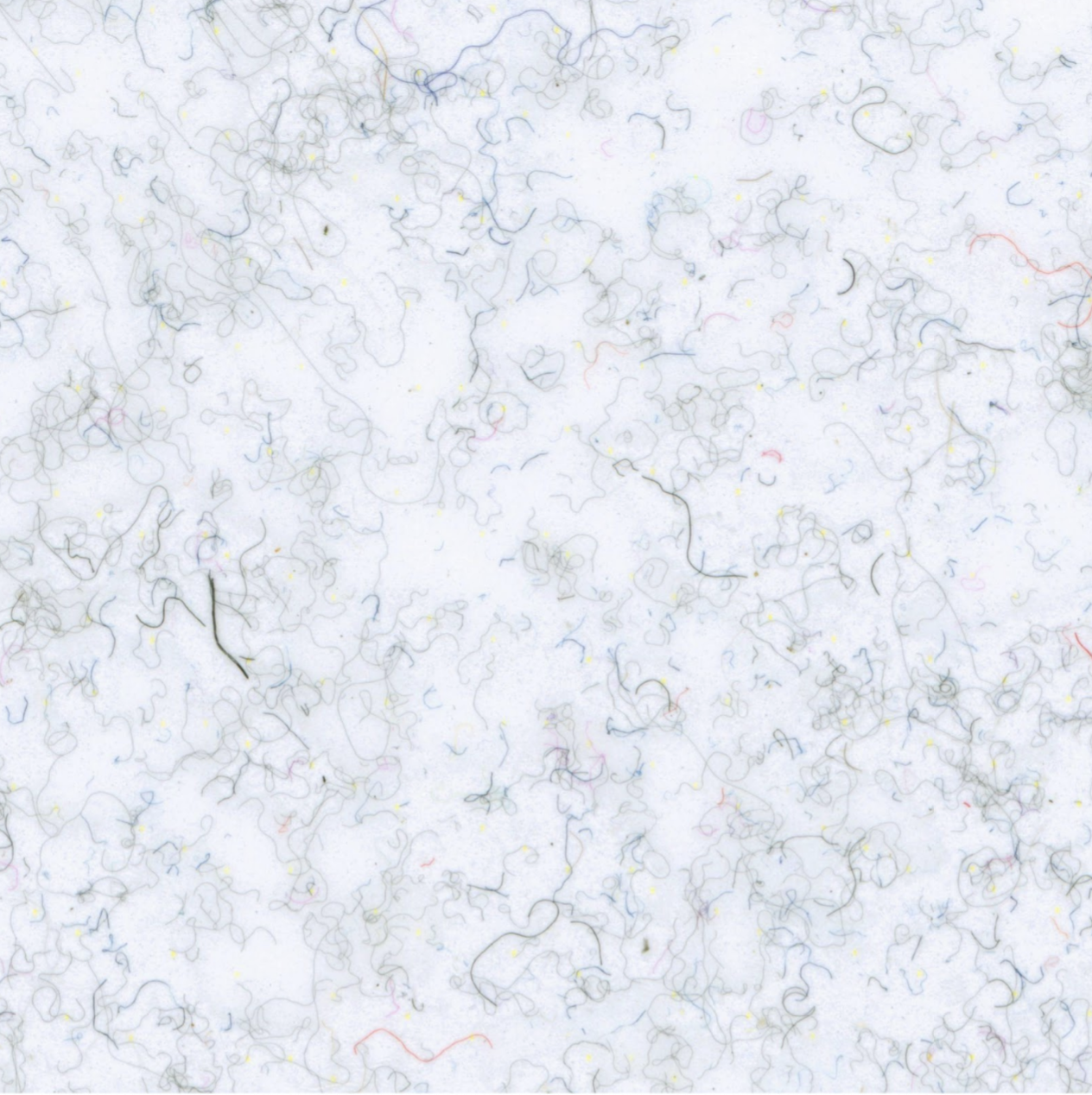
(Crop of high quality scan, of the microfibre sample nr.9 collected in the event “Art after AI” 28-29/11/2024, Free University of Bolzano-Bozen, Italy).
Designers Seçil Ugur Yavuz, Rocco Lorenzo Modugno, Maria Menendez-Blanco (Free University of Bolzano) took departure by troubling an assumption: although visual representations of quantitative scientific data can help us understand the causes and consequences of environmental problems, most of the times they lack the experiential qualities that might enhance the comprehension of their complexity and interconnectedness. They asked: how can we produce, collect, analyze and communicate data in more experiential, collective, and embodied ways?
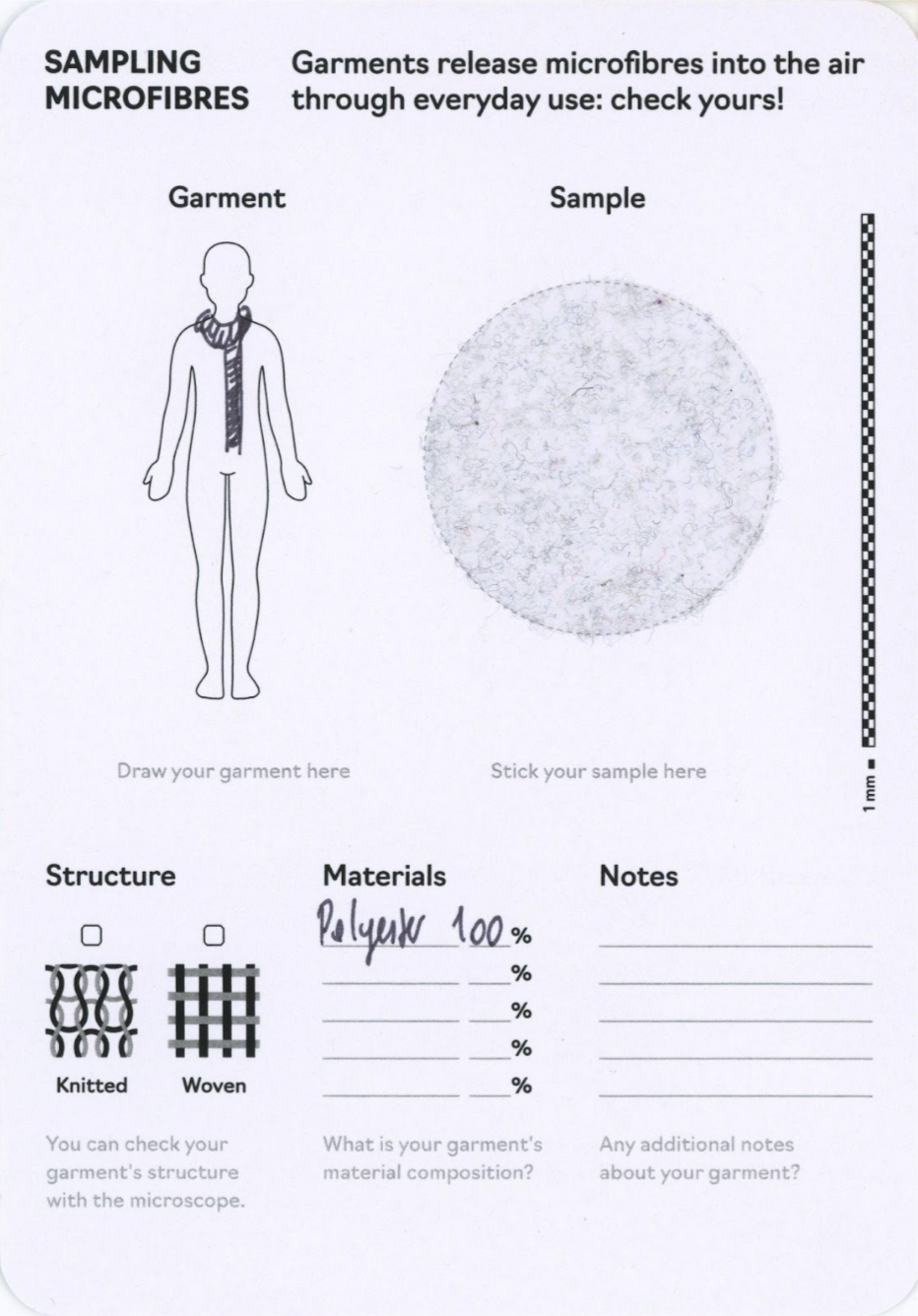
(Form nr.9 of the microfibre sampling form used during the event)
They presented some of their interventions and prototypes developed with Intra-project: Designing Embodied Human-Data Intra-actions (2023 - ongoing). This is a design research project exploring how material and body traces can help us notice the environmental entanglements occurring in our everyday life actions, while walking, buying, streaming, or even doom scrolling. Starting from the concept of "intra-action" coined by Karen Barad (2007), this project turns invisible phenomena (i.e. the presence of microplastics in our garments) into embodied experience, going beyond simple representation and visualization by turning scientific data into lived experience. They demonstrated one of their interventions during the panel, collecting and visualizing microfibers collected from participants (see below image).
(Crop on the sampling area of the forms collected during the event)
Wrapping-up: Understanding Scientific Images, their Genealogy and their Aesthetic Power
The panel “The Good and the Beautiful: Visualizing Science in the (Post)-Digital Age” provided a rich, multidisciplinary overview of scientific visualization’s ability to construct knowledge and transmit new and old cosmologies: Monti demonstrated how, for example, understanding the structure and functioning of AI is hampered by the use of inadequate imagery; Lemerle showed how the ways in which we view the brain are influenced by the ideas (individual, relational, collective) we have about personhood and subjectivity; Burgio explored how the use of mixed cultivation, in which the material self-organizes to become a communicative tool, is linked to a shift in the space allotted to non-human agency in the communication of scientific data; Ugur, Modugno, and Menendez-Blanco called for responsibility towards climate change as embodied, interactive and embedded in technological forms.
Our final discussion was a dialogic development of the presentations, addressing topics including: the impact of AI in visualizing the brain’s structure; the intelligence of the body as a response to the limits of neural networks, and; biological intelligence as a model for human intelligence. Finally, the conveners and the public emphasized the importance of dialogue between scientists, engineers, social scientists, philosophers and semioticians to better understand and reveal the values underlying scientific discourse. A clear picture emerged throughout these dialogues: Visualization is not merely a technical tool, but a powerful cultural, epistemic, and emotional mediator.
Our final discussion was a dialogic development of the presentations, addressing topics including: the impact of AI in visualizing the brain’s structure; the intelligence of the body as a response to the limits of neural networks, and; biological intelligence as a model for human intelligence. Finally, the conveners and the public emphasized the importance of dialogue between scientists, engineers, social scientists, philosophers and semioticians to better understand and reveal the values underlying scientific discourse. A clear picture emerged throughout these dialogues: Visualization is not merely a technical tool, but a powerful cultural, epistemic, and emotional mediator.
'The Good and the Beautiful: Visualizing Science in the (Post)-Digital Age' panel was organized as part of the HealthXCross Project, hosted by the hosted by the Department of Philosophy and Cultural Heritage of the Ca’ Foscari University of Venice and NICHE (the New Institute for Environmental Humanities), Venice, funded by the European Research Council (ERC) under the European Union's Horizon 2020 Research and Innovation Programme (GA n. 949742 HealthXCross).
Published: 07/28/2025
